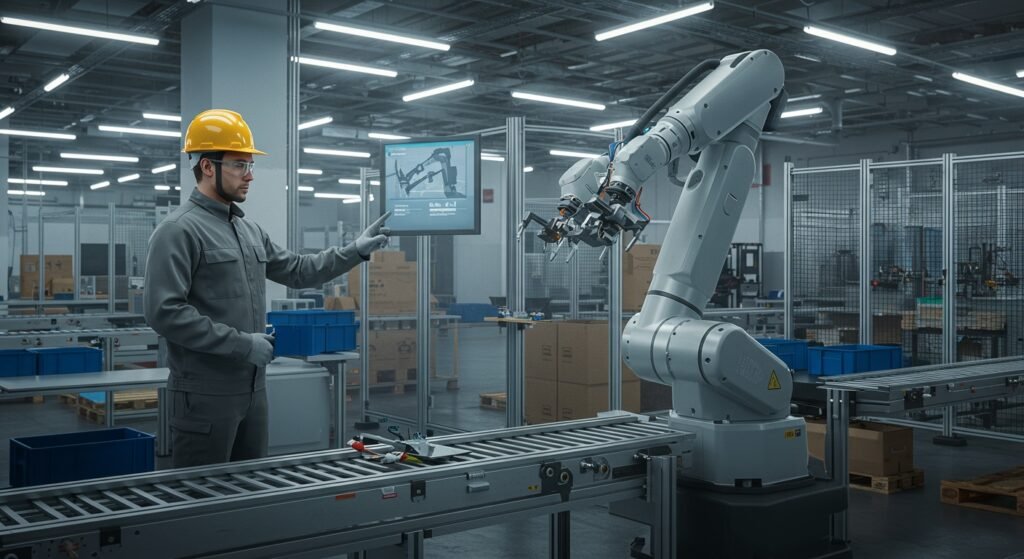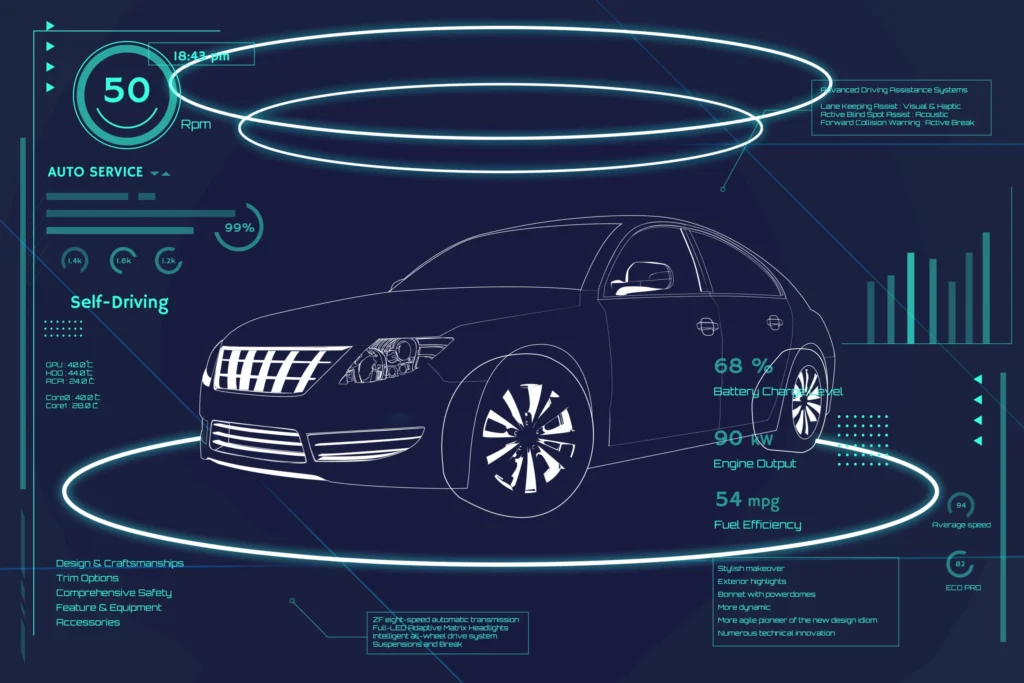Human-Centered Robotics: Building Safe and Efficient Work Environments
In the rapidly evolving landscape of industrial automation, the concept of human-centered robotics is emerging as a cornerstone for future workplaces. This approach moves beyond mere machine functionality, prioritizing the well-being, capabilities, and safety of human operators working alongside intelligent systems. By integrating advanced technology with thoughtful design, human-centered robotics aims to create environments where humans and robots can collaborate seamlessly, enhancing productivity and job satisfaction.
Table of Contents
- Introduction to Human-Centered Robotics
- Core Principles of Human-Centered Robotics
- Enhancing Workplace Safety Systems
- Ergonomic Design for Human-Robot Collaboration
- The Rise of Collaborative Robots (Cobots)
- Designing for Human-Robot Interaction
- The Future of Human-Centered Robotics
- Conclusion
Introduction to Human-Centered Robotics
The integration of robots into human workspaces has long raised questions about safety, job displacement, and overall workplace dynamics. However, the paradigm of human-centered robotics offers a promising solution. It’s an approach that ensures robotic systems are designed not just for performance, but also for intuitive interaction, adaptability to human needs, and, crucially, for guaranteeing human safety. This philosophy is pivotal in transforming traditional industrial settings into highly efficient, safer, and more engaging places to work.
Core Principles of Human-Centered Robotics
Building effective human-robot teams requires adherence to several key principles:
1. Safety by Design
At the forefront of human-centered design is the unwavering commitment to safety. This means incorporating features like redundant safety systems, advanced sensor technologies for collision avoidance, and intuitive emergency stop mechanisms. Robots must be designed to understand and react to human presence, ensuring that potential hazards are mitigated before they become risks.
2. Ergonomics and User Experience
Robotic systems should complement human physical and cognitive abilities, not hinder them. This involves designing interfaces that are easy to understand, reducing physical strain on workers, and ensuring that robot movements and actions are predictable and non-threatening. Good ergonomic design enhances comfort, reduces fatigue, and improves overall productivity.
3. Adaptability and Flexibility
Human-centered robots are capable of adapting to various tasks and human work styles. This flexibility allows for dynamic task allocation and enables robots to assist humans in diverse scenarios, from heavy lifting to precision assembly. Such adaptability fosters a more resilient and efficient work environment.
Enhancing Workplace Safety Systems
The advancement of safety systems is central to the success of human-centered robotics. Modern robots are equipped with sophisticated sensors like lidar, cameras, and force-torque sensors that allow them to perceive their environment and react to human presence in real-time. This active perception is critical for preventing accidents. Furthermore, safety-rated monitored stops and speed/separation monitoring ensure that robots operate within safe parameters when humans are nearby.
Here’s a comparison of traditional vs. human-centered safety features:
| Feature | Traditional Robotics Safety | Human-Centered Robotics Safety |
|---|---|---|
| Interaction Zone | Guarded, separated work cells | Shared, collaborative workspaces |
| Collision Avoidance | Passive (fences, light curtains) | Active (sensors, dynamic speed/stop) |
| Human Presence Detection | Limited, boundary-based | Real-time, context-aware perception |
| Safety Standard Focus | Machine guarding, lockout/tagout | ISO/TS 15066 (Collaborative Operation) |
Ergonomic Design for Human-Robot Collaboration
Beyond basic safety, ergonomic considerations play a vital role. This includes aspects like adjustable robot heights for different human operators, intuitive programming interfaces that don’t require extensive coding knowledge, and robots designed to assist with physically demanding tasks. By offloading repetitive or strenuous work, robots can significantly reduce the risk of musculoskeletal injuries among human workers, leading to a healthier and more productive workforce. For more insights into industrial ergonomics, you can visit a resource like OSHA’s Ergonomics Guidelines.
The Rise of Collaborative Robots (Cobots)
Collaborative robots, or cobots, are the epitome of human-centered design. Unlike traditional industrial robots, cobots are specifically engineered to work alongside humans without the need for extensive safety caging. Their inherent safety features, such as limited force/power, soft materials, and advanced sensor arrays, allow for direct human-robot interaction. This enables new paradigms in manufacturing and service industries, where cobots can perform repetitive tasks while humans focus on more complex problem-solving, quality control, or creative aspects of the job. They are transforming how factories operate, bringing flexibility and adaptability to production lines.
Applications of Cobots
- Assembly tasks requiring human dexterity
- Material handling and kitting
- Quality inspection
- Machine tending
- Packaging and palletizing
Designing for Human-Robot Interaction
Effective human-robot interaction is not just about physical safety; it’s also about psychological comfort and trust. Designers must consider how humans perceive robots. Factors such as a robot’s appearance, its communication methods (e.g., visual cues, sounds), and its predictability are crucial. Transparency in a robot’s intentions and actions builds trust, making human workers more comfortable and willing to engage with their robotic counterparts. This holistic approach to design ensures that the integration of robots is smooth and beneficial for all stakeholders.
The Future of Human-Centered Robotics
The future of human-centered robotics promises even more sophisticated integration. Advances in artificial intelligence and machine learning will enable robots to understand human intentions and emotions better, leading to truly intuitive collaboration. Personalized robotics, where robots adapt to individual worker preferences and learning styles, is on the horizon. This evolution will not only redefine efficiency but also elevate the quality of work life, making workplaces safer, more stimulating, and more productive. To explore further trends in automation, see our article on AI in Manufacturing.
Conclusion
Human-centered robotics represents a profound shift in how we conceive and deploy automation. By placing human needs at the core of robotic design, we can unlock unprecedented levels of safety, efficiency, and collaboration in the workplace. This isn’t just about making robots smarter; it’s about making them better partners for humanity. As we continue to develop these intelligent systems, the focus must remain on augmenting human capabilities and creating symbiotic relationships that benefit both individuals and industries.


